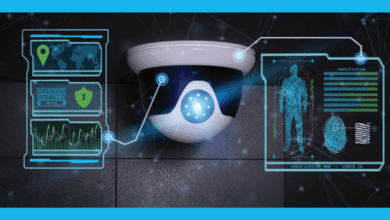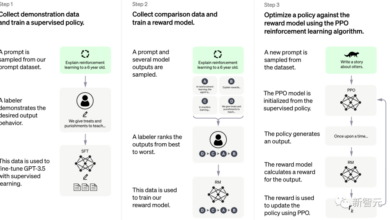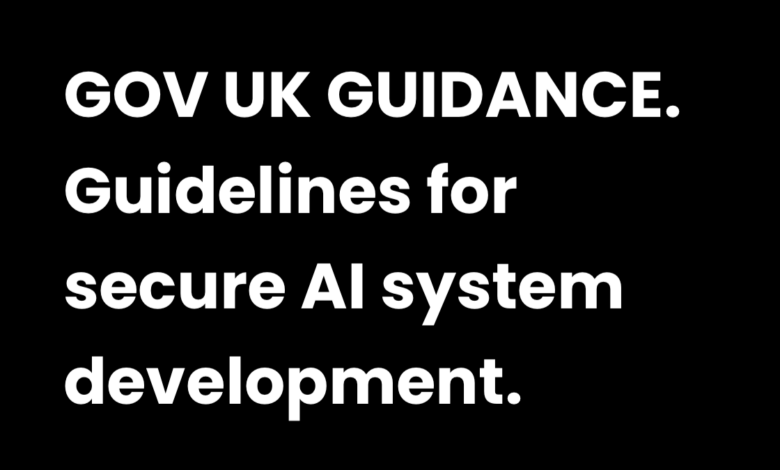
Guidelines for Secure AI System Development
Guidelines for secure AI system development are crucial in today’s rapidly evolving technological landscape. This exploration delves into the multifaceted aspects of building trustworthy and responsible AI systems, from foundational principles to practical implementation strategies. We’ll cover everything from ethical considerations and data security to model robustness and system architecture, ultimately aiming to provide a comprehensive framework for securing AI applications.
The guidelines encompass a broad spectrum of concerns, including the ethical implications of AI, the crucial role of data privacy and security, the vulnerabilities of AI models, and the importance of robust system design. These principles are not just theoretical; they are practical tools to mitigate potential risks and build AI systems that benefit society while adhering to high standards of security and ethical practice.
Foundational Principles for Secure AI Systems
Building secure AI systems demands a comprehensive approach that goes beyond technical implementations. It necessitates a deep understanding of ethical considerations, fairness, transparency, accountability, and privacy. This foundation ensures that AI systems are not only effective but also trustworthy and beneficial to society.Developing AI systems responsibly involves careful consideration of their potential societal impact. A strong ethical framework is crucial to mitigating risks and ensuring equitable outcomes.
This includes acknowledging and addressing potential biases, ensuring transparency in decision-making processes, and establishing mechanisms for accountability when errors occur.
Ethical Considerations in AI Development
Ethical considerations are paramount in the development of AI systems. These considerations encompass a wide range of issues, from algorithmic bias to the potential for misuse. A comprehensive ethical framework must guide developers and users to make informed decisions, promoting responsible AI deployment.
- Fairness: AI systems must treat all individuals and groups equitably. This requires careful attention to potential biases within the data and algorithms used to train the systems. For example, an AI system designed to assess loan applications should not discriminate against certain demographic groups.
- Transparency: The decision-making processes of AI systems should be understandable and explainable. This fosters trust and allows for scrutiny, enabling users to understand how the AI system arrived at its conclusions.
- Accountability: Mechanisms must be in place to identify and address errors or biases in AI systems. This includes establishing clear lines of responsibility and procedures for remediation.
- Privacy: AI systems often process vast amounts of personal data. Robust privacy safeguards are essential to protect individuals’ rights and prevent misuse of sensitive information. This includes data minimization, anonymization techniques, and adherence to relevant privacy regulations.
Importance of Fairness, Transparency, and Accountability
These principles are essential to building trust and ensuring that AI systems benefit all members of society. Fairness, transparency, and accountability are interconnected, forming a critical foundation for responsible AI development. By prioritizing these principles, we can foster a more just and equitable world.
- Fairness ensures that AI systems do not perpetuate or amplify existing societal biases. This prevents AI from reinforcing inequalities based on race, gender, socioeconomic status, or other factors.
- Transparency is vital for building trust and understanding. When users can understand how AI systems make decisions, they can identify potential errors or biases and demand appropriate action.
- Accountability provides a mechanism to address errors or misuse of AI systems. It helps hold developers and organizations accountable for the consequences of their AI deployments.
Role of Privacy in Designing Secure AI Systems
Protecting user privacy is a critical aspect of designing secure AI systems. AI systems frequently process vast amounts of personal data, requiring strict adherence to privacy regulations and ethical guidelines.
- Data Minimization: Only collect and use the minimum amount of data necessary to achieve the intended purpose.
- Data Anonymization: Transform personal data into a format that does not reveal individual identities.
- Data Security: Implement robust security measures to protect data from unauthorized access, use, disclosure, alteration, or destruction.
Potential Biases in AI and Mitigation Strategies
AI systems can inherit biases from the data they are trained on, leading to unfair or discriminatory outcomes. Recognizing and mitigating these biases is essential for building equitable and trustworthy AI systems.
| Type of Bias | Description | Mitigation Strategies |
|---|---|---|
| Data Bias | Data used to train AI models reflects existing societal biases. | Collect diverse and representative datasets. Identify and remove biased data points. Use data augmentation techniques to improve data representation. |
| Algorithmic Bias | AI algorithms themselves can introduce biases, even with unbiased data. | Use explainable AI (XAI) techniques to understand how algorithms make decisions. Employ fairness-aware algorithms during model development. |
| Evaluation Bias | Evaluation metrics may not reflect real-world impact, leading to biased models. | Use diverse and representative evaluation datasets. Employ fairness-aware evaluation metrics. Consider the broader societal impact of the AI system. |
Data Security and Privacy in AI Development
Protecting sensitive data is paramount in AI development. AI models are trained on vast datasets, often containing personally identifiable information (PII), financial details, or other confidential data. Compromising this data can lead to significant legal and reputational risks for organizations, as well as severe harm to individuals. Robust security measures and privacy-preserving techniques are essential to safeguard this data throughout the entire AI lifecycle.AI systems are becoming increasingly sophisticated, but their reliance on large datasets makes them vulnerable to breaches if not properly secured.
Data breaches can result in financial losses, reputational damage, legal penalties, and significant harm to individuals whose data is exposed. Implementing rigorous data security and privacy measures is not just a best practice; it is a crucial requirement for responsible AI development.
Strategies for Securing Sensitive Data
Data encryption, access controls, and secure storage are crucial components of a robust data security strategy. Implementing encryption at rest and in transit safeguards sensitive data from unauthorized access. Implementing multi-factor authentication (MFA) for data access further strengthens security. Regular security audits and penetration testing help identify and address vulnerabilities in the system.
Data Anonymization Techniques, Guidelines for secure ai system development
Various techniques are employed to anonymize data while still enabling AI model training. Pseudonymization replaces identifying information with unique identifiers, while generalization replaces precise values with ranges or categories. Data masking techniques, like substituting sensitive values with generic data, provide another method. Differential privacy adds carefully controlled noise to the data, preserving individual privacy while allowing for analysis.
The choice of anonymization technique depends on the sensitivity of the data and the specific requirements of the AI model.
Data Access Control in AI Development
Controlling access to data is critical for maintaining confidentiality and preventing unauthorized use. Role-based access control (RBAC) defines access privileges based on the roles of individuals within the organization. Attribute-based access control (ABAC) allows more granular control, granting access based on specific attributes and conditions. Implementing strict access controls and regular reviews of access permissions are essential for data security.
Robust Data Governance Procedures
Establishing clear data governance procedures is crucial for managing and controlling data throughout its lifecycle. These procedures should define data ownership, usage policies, and retention schedules. Regular audits of data handling practices and adherence to regulations (e.g., GDPR, CCPA) are essential for maintaining compliance. A robust data governance framework helps ensure that data is used ethically and responsibly.
Examples of Data Breaches and Prevention
Numerous data breaches have highlighted the vulnerabilities in AI systems. Breaches involving sensitive data used for training AI models have resulted in significant reputational damage and financial losses. To prevent breaches, organizations must invest in robust security infrastructure, conduct regular security assessments, and prioritize the privacy and security of data throughout the development process. Employing strong encryption, regularly updating software, and employing security best practices are vital preventative measures.
Model Security and Robustness
AI models, despite their impressive capabilities, are susceptible to vulnerabilities. These vulnerabilities can stem from various factors, including the training data, the model architecture, and the input data itself. Understanding these vulnerabilities and developing strategies to mitigate them are crucial for building trustworthy and reliable AI systems. This section delves into the inherent weaknesses of AI models and presents methods for enhancing their robustness against adversarial attacks.AI models, particularly deep learning models, are often vulnerable to adversarial attacks.
These attacks involve subtly altering input data to fool the model into producing incorrect outputs. These alterations, often imperceptible to the human eye, can have significant consequences in real-world applications. Robustness evaluation is essential to determine how susceptible a model is to these attacks. By identifying and addressing these weaknesses, we can build more reliable and trustworthy AI systems.
Vulnerabilities to Adversarial Attacks
AI models can be tricked by carefully crafted “adversarial examples.” These are slightly modified inputs designed to induce incorrect predictions. The modifications are often imperceptible to humans but can cause significant errors in the model’s output. Such vulnerabilities arise from the complex nature of deep learning models and the non-linear relationships within their architectures. These vulnerabilities are a critical concern across various AI applications, including image recognition, natural language processing, and autonomous driving.
Methods for Evaluating Model Robustness
Assessing the robustness of an AI model requires rigorous testing. Several methods are employed to evaluate a model’s resistance to adversarial examples. These methods often involve generating adversarial examples and measuring the model’s accuracy under these conditions. One common approach is to systematically perturb the input data and observe how the model’s output changes. Another approach involves using specific algorithms designed to create adversarial examples and measuring the model’s resistance to these attacks.
This evaluation is crucial for assessing the reliability of the model in real-world scenarios.
Techniques to Defend Against Adversarial Attacks
Defending against adversarial attacks necessitates proactive measures. Several techniques are employed to enhance model robustness. One approach is to incorporate adversarial training, where the model is trained on data augmented with adversarial examples. This process helps the model learn to recognize and resist these attacks. Another approach is to use robust optimization techniques, which aim to find the optimal parameters of the model to minimize its susceptibility to adversarial attacks.
Further, incorporating defensive mechanisms directly into the model’s architecture can help to mitigate vulnerabilities.
Model Validation Techniques Comparison
| Technique | Description | Strengths | Weaknesses |
|---|---|---|---|
| Adversarial Training | Training the model on data augmented with adversarial examples. | Improved robustness against adversarial attacks. | Can be computationally expensive. |
| Robust Optimization | Finding optimal model parameters to minimize vulnerability to adversarial attacks. | Theoretically sound approach. | Computational complexity can be high, particularly for complex models. |
| Input Preprocessing | Filtering or transforming input data to reduce vulnerability to attacks. | Simple to implement, often effective for specific types of attacks. | May not generalize well to unseen attacks. |
Real-World AI Model Failures and Their Causes
Real-world instances of AI model failures often highlight the importance of robustness. For example, facial recognition systems have demonstrated inaccuracies in identifying individuals from diverse backgrounds or under challenging lighting conditions. These failures frequently stem from biased or insufficient training data, leading to flawed or unfair outcomes. Similarly, self-driving car systems have encountered unexpected situations, highlighting the need for extensive testing and robust validation in complex and unpredictable environments.
These examples underscore the need for rigorous evaluation and continuous monitoring of AI systems in real-world deployment.
System Architecture and Design: Guidelines For Secure Ai System Development
Building a secure AI system requires a robust architecture that considers various deployment environments and potential threats. This involves careful planning and design choices that extend beyond the model itself, encompassing the entire system lifecycle. A well-structured architecture ensures data integrity, confidentiality, and availability throughout the AI system’s operation.A secure AI system design should prioritize modularity and separation of concerns, enabling easier maintenance, updates, and future expansion.
This modularity also facilitates isolation of potential vulnerabilities, reducing the impact of a breach in one component on the entire system. By designing with security in mind from the outset, developers can significantly reduce the risk of unforeseen issues.
Secure Architecture for AI Systems
A secure AI system architecture must address potential threats across various deployment environments. This includes cloud deployments, on-premises installations, and hybrid setups. A layered approach, incorporating security controls at different levels, is crucial. For instance, access control mechanisms should be implemented at the data, model, and application layers to limit unauthorized access.
Modularity and Separation of Concerns
Modularity and separation of concerns are essential for maintainability and security in AI systems. Dividing the system into independent modules allows for easier debugging, testing, and updating of specific components without affecting others. This isolates potential vulnerabilities and simplifies security audits. A well-defined interface between modules ensures clear communication and minimizes dependencies.
Secure Communication Protocols
Secure communication protocols are vital for protecting data exchanged between different components of an AI system. Protocols like HTTPS, TLS, and secure shell (SSH) should be used for all data transmission. Encryption plays a critical role in ensuring that sensitive data, such as training data, model parameters, and inference results, remain confidential during transit.
Authentication and Authorization
Robust authentication and authorization mechanisms are critical for controlling access to AI systems. These mechanisms should verify the identity of users and services and grant them appropriate permissions. Multi-factor authentication (MFA) should be employed whenever possible, adding an extra layer of security. Access controls should be granular, limiting access only to the necessary resources.
Deployment Models Comparison
Different deployment models offer varying levels of control and security. Cloud deployments leverage third-party infrastructure, offering scalability and cost-effectiveness. However, security relies on the cloud provider’s security measures and adherence to service-level agreements (SLAs). On-premises deployments provide greater control and customization but require significant upfront investment in hardware and infrastructure. Hybrid deployments combine elements of both cloud and on-premises models, allowing for tailored security and performance.
| Deployment Model | Pros | Cons |
|---|---|---|
| Cloud | Scalability, cost-effectiveness, access to various services | Security reliance on provider, potential vendor lock-in, data sovereignty concerns |
| On-premises | Full control over infrastructure and data, enhanced data sovereignty | High upfront costs, limited scalability, maintenance responsibilities |
| Hybrid | Flexibility, combining advantages of cloud and on-premises | Complexity in management, potential for security gaps at the junction of the two environments |
Testing and Auditing Procedures
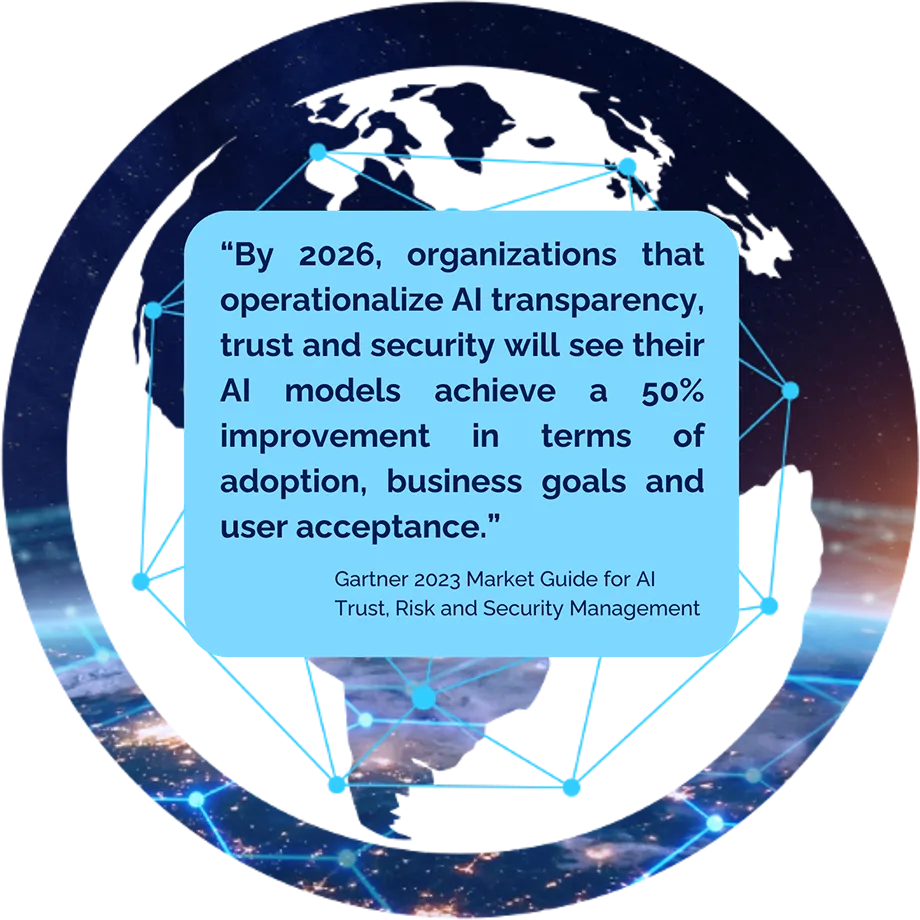
Rigorous testing and auditing are crucial for ensuring the security and reliability of AI systems. These processes identify vulnerabilities, validate expected performance, and ultimately contribute to building trust in AI applications. Comprehensive testing strategies, coupled with robust auditing procedures, are essential for minimizing risks and maximizing the trustworthiness of AI systems.
Comprehensive Testing Methodologies for Evaluating AI System Security
AI systems require a multifaceted approach to testing. This involves evaluating not only the system’s functionality but also its resistance to adversarial inputs and potential vulnerabilities. Static analysis of code, dynamic analysis during execution, and penetration testing provide a holistic assessment. Techniques like fuzzing and white-box testing are employed to uncover vulnerabilities in the AI model’s architecture and the code that supports it.
These tests ensure the system’s robustness and resilience against various threats.
Procedures for Penetration Testing of AI Systems
Penetration testing simulates real-world attacks on AI systems to identify vulnerabilities. This involves employing various attack vectors, including adversarial examples, data poisoning, and manipulation of system parameters. A key aspect of penetration testing is the development of attack profiles mimicking malicious actors. Testing should also consider the specific AI model type, its intended use case, and potential attack surfaces.
Detailed reporting on discovered vulnerabilities, along with remediation strategies, is vital for the success of the penetration testing process.
The Role of Security Audits in Maintaining AI System Security
Security audits are critical for ongoing maintenance and improvement of AI system security. These audits assess the effectiveness of security controls and identify areas needing improvement. They cover the entire system lifecycle, from data collection and model training to deployment and ongoing operation. Regular audits can prevent potential security breaches and help organizations adapt to evolving threats.
They should include a review of security policies, procedures, and compliance with relevant regulations.
Different Types of Security Vulnerabilities in AI Systems and Their Mitigation Strategies
| Vulnerability Type | Description | Mitigation Strategy |
|---|---|---|
| Adversarial Examples | Inputs crafted to mislead the AI model, potentially leading to incorrect predictions or actions. | Robust training techniques, incorporating adversarial examples into the training data, and employing defense mechanisms like adversarial training. |
| Data Poisoning | Malicious actors introduce corrupted or manipulated data into the training dataset, leading to biases or inaccurate model outputs. | Implementing robust data validation and sanitization procedures, employing anomaly detection mechanisms, and diversifying data sources. |
| Model Inversion | Reverse engineering the model to understand its internal workings and potentially exploit weaknesses. | Employing obfuscation techniques to make the model’s internal structure harder to reverse engineer, and implementing access control to limit model access. |
| Evasion Attacks | Techniques that aim to bypass security measures by manipulating input data or system parameters. | Developing robust defenses against evasion attacks, using techniques like input validation and data sanitization, and incorporating security considerations throughout the development process. |
Implementing Security Testing in Different Stages of AI Development
Security testing should be integrated into every phase of AI development. During the design and planning phase, security considerations should be a key component of the requirements and specifications. Testing should be incorporated during the model training and validation stages to detect vulnerabilities early on. In the deployment phase, continuous monitoring and security assessments are essential to detect and address any emerging threats.
Throughout the entire process, collaboration between development and security teams is critical to maintaining a robust security posture.
Maintaining Secure AI Systems

Ensuring the ongoing security of AI systems is crucial for their reliable and trustworthy operation. Continuous monitoring, proactive updates, and robust incident response mechanisms are essential to mitigate vulnerabilities and maintain user confidence. Ignoring these aspects can lead to serious consequences, including financial losses, reputational damage, and even potential harm to individuals or society.Proactive measures are paramount in maintaining the security of AI systems.
These measures involve continuous monitoring for anomalies, timely updates to address vulnerabilities, and well-defined incident response plans. A comprehensive approach to security is vital to ensure the longevity and trustworthiness of AI systems.
Continuous Monitoring Procedures for AI Systems
Continuous monitoring is vital to detect anomalies and potential threats in AI systems. This involves observing system behavior, performance metrics, and data flows to identify unusual patterns that might indicate a security breach or malicious activity. Monitoring tools should track critical metrics like resource usage, model accuracy, and input/output data characteristics. Alert thresholds should be set for deviations from expected behavior to trigger immediate investigations.
Developing secure AI systems requires meticulous attention to detail, and understanding potential vulnerabilities like those highlighted in the Azure Cosmos DB Vulnerability Details. For example, a crucial part of those guidelines is considering the potential for data breaches in cloud storage solutions. Knowing the specifics of vulnerabilities, like those detailed in the Azure Cosmos DB Vulnerability Details , is vital for building robust AI systems.
Ultimately, this knowledge directly impacts the development of effective security measures across the board.
This proactive approach allows for swift detection and response to security incidents, minimizing potential damage.
Security Updates and Patching for AI Models
Regular security updates and patching are essential to address vulnerabilities in AI models. AI models, like traditional software, can have vulnerabilities that need to be addressed through patches and updates. These updates can include changes to the model architecture, training data, or the underlying algorithms. A comprehensive update management process, including testing and validation procedures, is critical to avoid introducing new vulnerabilities or degrading model performance.
The process must consider the potential impact of updates on model accuracy and functionality. Implementing a robust update system is crucial for maintaining the security and reliability of AI systems.
Incident Response Procedures in AI Systems
A well-defined incident response plan is essential for handling security incidents in AI systems. The plan should Artikel procedures for detecting, containing, analyzing, and recovering from security breaches. Key components include a clear chain of command, communication protocols, and designated personnel responsible for different stages of the incident response process. The plan should also address the potential impact of the incident on data, models, and users.
Effective incident response minimizes the impact of security breaches and ensures a swift return to normal operations.
Developing secure AI systems requires robust guidelines, and recent developments like the Department of Justice Offers Safe Harbor for MA Transactions here highlight the importance of legal frameworks in this space. These frameworks, alongside detailed technical protocols, are crucial for building AI systems that are both effective and trustworthy. Ultimately, a multifaceted approach combining technical expertise with legal considerations is essential for the responsible development of AI.
Security Awareness Training for AI Development Teams
Security awareness training for AI development teams is crucial for preventing security breaches. This training should cover topics such as recognizing potential threats, identifying vulnerabilities in AI systems, and reporting security concerns. Training should also emphasize the importance of secure coding practices, data handling procedures, and the ethical implications of AI development. A well-trained team is less susceptible to security incidents and more adept at identifying and mitigating potential threats.
Developing secure AI systems needs robust guidelines, and one crucial aspect is deploying effective safety measures. This involves incorporating best practices like those highlighted in “Deploying AI Code Safety Goggles Needed” Deploying AI Code Safety Goggles Needed. Ultimately, these guidelines help ensure AI systems are not only functional but also trustworthy and safe.
Roles and Responsibilities of Individuals Involved in AI System Security
The security of AI systems requires a collaborative effort across different roles. This table Artikels the key roles and their associated responsibilities.
| Role | Responsibilities |
|---|---|
| AI System Architect | Design and implement secure system architectures, ensuring compliance with security standards. |
| Data Scientist | Develop secure data pipelines, handling sensitive data with care, and ensuring data integrity and confidentiality. |
| Model Developer | Implement secure coding practices, rigorously test models for vulnerabilities, and update models as needed. |
| Security Engineer | Monitor system logs, detect anomalies, and implement security controls; manage incident response processes. |
| Project Manager | Ensure that security considerations are incorporated into the project lifecycle, including risk assessments and mitigation strategies. |
Legal and Regulatory Compliance
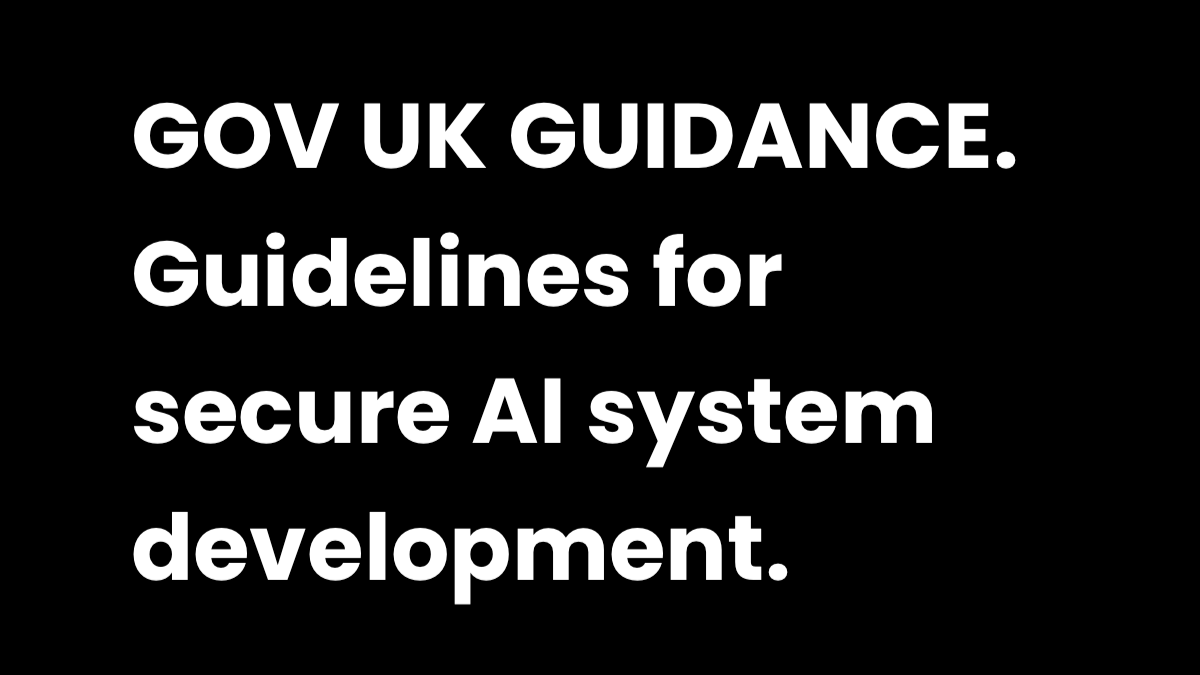
Navigating the complex world of AI development demands a keen understanding of the legal and regulatory frameworks governing its use. This is crucial to avoid potential liabilities and ensure ethical deployment. Failure to comply with these frameworks can lead to significant financial penalties and reputational damage. A proactive approach to legal compliance is vital for the responsible development and deployment of AI systems.AI systems are increasingly integrated into various sectors, from healthcare and finance to transportation and law enforcement.
This necessitates a robust understanding of the legal and regulatory landscape surrounding AI development, implementation, and operation. Jurisdictions around the world are actively developing and adapting regulations to address the unique challenges posed by AI. These frameworks are intended to promote responsible innovation while mitigating potential risks.
Legal Frameworks Governing AI Development
Different jurisdictions have varying approaches to regulating AI. Some countries have implemented specific AI laws, while others rely on existing regulations applicable to data protection, algorithmic bias, and other related areas. Understanding the nuances of these frameworks is paramount for AI developers.
Compliance Requirements for Different Jurisdictions
Compliance requirements vary significantly depending on the jurisdiction. For example, the European Union’s General Data Protection Regulation (GDPR) imposes stringent requirements for data handling in AI systems. The United States, while not having a single, comprehensive AI law, has various regulations governing different sectors and uses of AI. China, too, has specific guidelines and regulations concerning AI development and deployment.
These regulations often involve aspects of data privacy, algorithmic transparency, and potential biases. Adherence to these requirements is critical for successful deployment.
Importance of Legal Reviews for AI Systems
Legal reviews are essential for ensuring AI systems comply with relevant laws and regulations. These reviews should identify potential legal risks, such as biases in algorithms, data privacy violations, and liability issues in case of errors. Thorough legal reviews help developers build systems that minimize the chances of legal disputes and safeguard their reputation. These reviews are often a proactive step to identify and mitigate issues that could arise.
Potential Legal Liabilities Related to AI System Failures
AI system failures can lead to significant legal liabilities. If an AI system makes a flawed decision, potentially causing harm, the developers and deployers may face legal repercussions. These liabilities can include compensation for damages, fines, or even criminal charges, depending on the severity and nature of the failure. Examples of such liabilities include cases of misdiagnosis in healthcare, financial fraud, or accidents in self-driving cars.
Identifying and addressing these potential liabilities proactively is critical.
Examples of Legal Cases Involving AI Systems and Their Implications
Several cases involving AI systems have emerged in various courts. These cases have illuminated areas of legal uncertainty and prompted adjustments in regulations and legal interpretations. For instance, cases involving algorithmic bias in loan applications or hiring processes have raised awareness about the need for fairness and transparency in AI systems. Such cases underscore the need for continuous monitoring and evaluation of AI systems to identify and mitigate potential biases and discrimination.
Examples of cases related to autonomous vehicles, facial recognition systems, and other AI applications have all influenced legal interpretations and frameworks. The implications of these cases often serve as valuable lessons for developers and regulators alike.
Epilogue
In conclusion, creating secure AI systems requires a holistic approach that considers ethical principles, robust data handling, secure model design, and meticulous testing procedures. By implementing these guidelines, developers can build AI systems that are not only functional but also trustworthy, transparent, and accountable. The future of AI hinges on our collective commitment to responsible development, and these guidelines are a critical step in that journey.
User Queries
What are some common biases in AI systems?
AI models can inherit biases from the data they are trained on. These biases can manifest in various forms, such as gender bias, racial bias, or socioeconomic bias. Understanding and mitigating these biases is essential for building fair and equitable AI systems.
How can I ensure data privacy in AI projects?
Robust data governance procedures, anonymization techniques, and access controls are essential for protecting sensitive data used in training AI models. Implementing these measures helps prevent data breaches and ensures compliance with privacy regulations.
What are the legal and regulatory considerations for AI development?
Different jurisdictions have varying legal and regulatory frameworks for AI development. Compliance with these regulations is crucial to avoid legal liabilities. Understanding and adhering to these frameworks is paramount.
How do I test AI systems for vulnerabilities?
Comprehensive testing methodologies, including penetration testing, security audits, and continuous monitoring, are essential to identify and address vulnerabilities in AI systems. Implementing these testing procedures at various stages of development helps ensure security.

